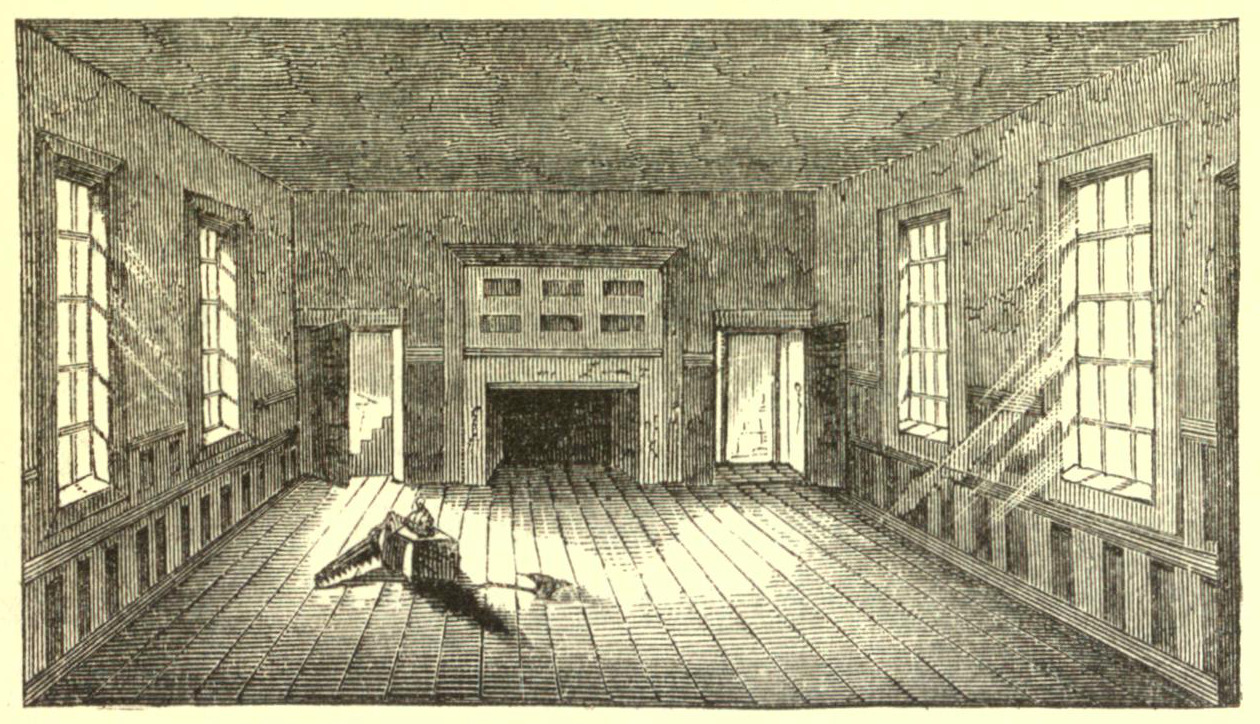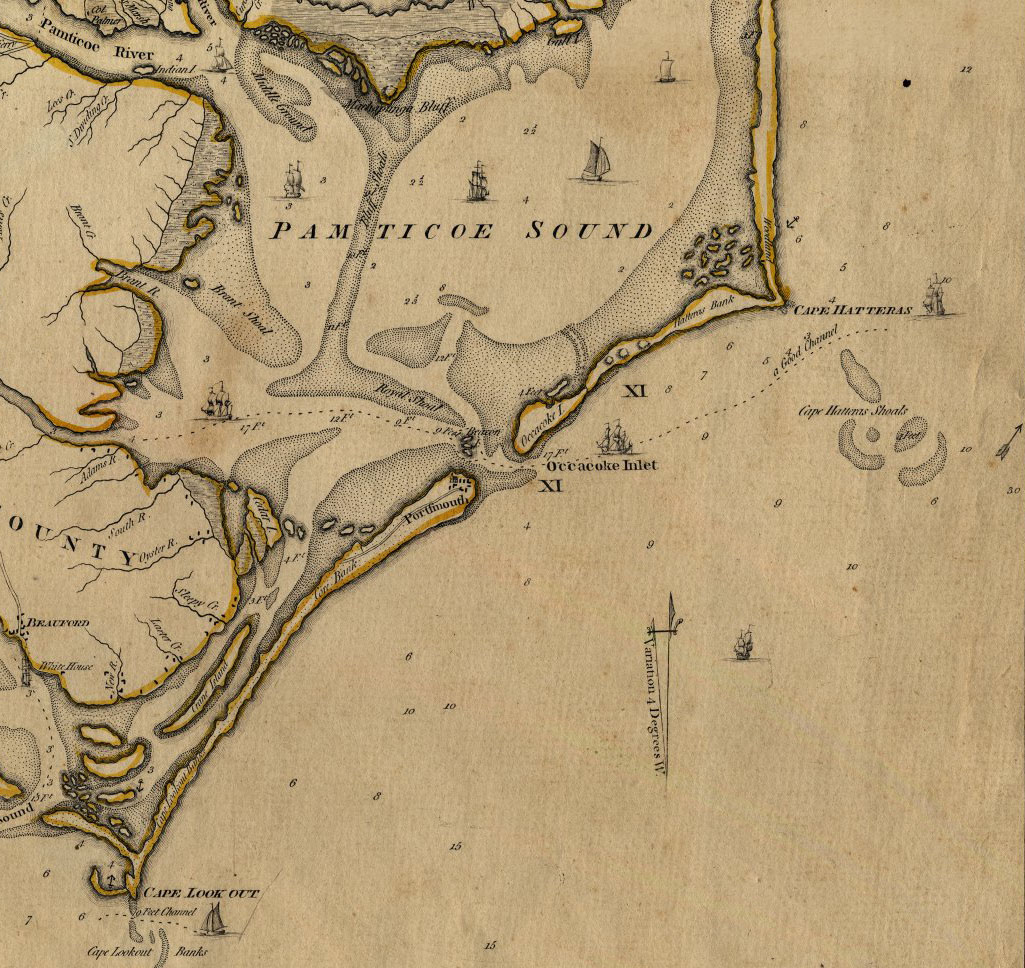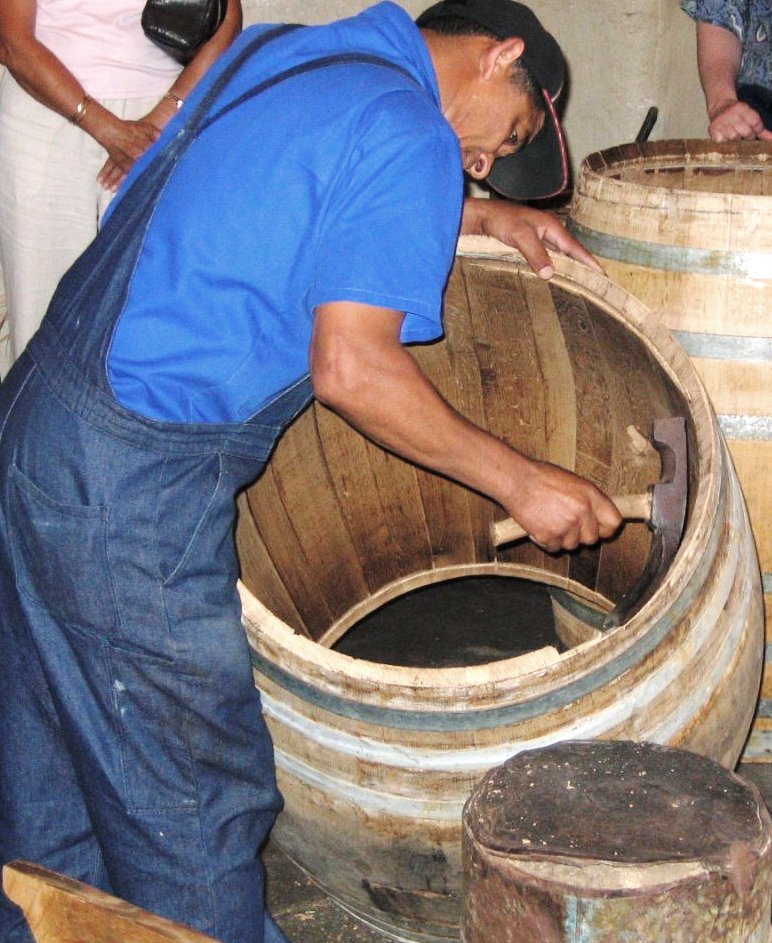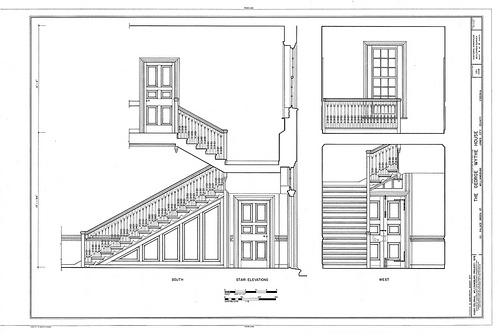|
Colonial Williamsburg
Colonial Williamsburg is a living-history museum and private foundation presenting a part of the historic district in Williamsburg, Virginia. Its historic area includes several hundred restored or recreated buildings from the 18th century, when the city served as the capital of the colonial era Colony of Virginia. The district includes 17th-century, 19th-century, Colonial Revival, and more recent structures and reconstructions. The historic area includes three main thoroughfares and their connecting side streets, which are designed to represent how Williamsburg existed in the 18th century. Costumed employees work and dress as people did during the colonial era, sometimes using colonial grammar and diction. In the late 1920s, the restoration of colonial Williamsburg was championed as a way to celebrate patriots and the early history of the United States. Proponents included W. A. R. Goodwin and other community leaders, the Association for the Preservation of Virginia Antiqui ... [...More Info...] [...Related Items...] OR: [Wikipedia] [Google] [Baidu] [Amazon] |
Raleigh Tavern
The Raleigh Tavern was a tavern in Williamsburg, Virginia, and was one of the largest taverns in colonial Virginia. It gained some fame in the pre-American Revolutionary War Virginia Colony, Colony of Virginia as a gathering place for legislators after several Royal Governors officially dissolved the House of Burgesses, the elected legislative body, when their actions did not suit the Crown. It was also the site of the founding of the Phi Beta Kappa Society on December 5, 1776. Rebuilt in 1930–31, it was both the first building to be reconstructed and to be opened as part of Colonial Williamsburg. Unlike several other taverns in Williamsburg that operate as restaurants or inns, the reconstructed Raleigh Tavern building serves as a museum, showing visitors how the tavern would have appeared. It was named after Sir Walter Raleigh, an important figure in the English settlement of Virginia. A lead bust of Raleigh sat above the entrance door. History From 1699 to 1779, Williamsbu ... [...More Info...] [...Related Items...] OR: [Wikipedia] [Google] [Baidu] [Amazon] |
Colonial Parkway
Colonial Parkway is a scenic parkway linking the three points of Virginia's Historic Triangle, Jamestown, Williamsburg, and Yorktown. It is part of the National Park Service's Colonial National Historical Park. Virginia's official state classification for the parkway is State Route 90003. With portions built between 1930 and 1957, it links the three communities via a roadway shielded from views of commercial development. The roadway is toll-free, is free of semi trucks, and has speed limits of around . As a National Scenic Byway and All-American Road (one of only 31 in the U.S.), it is also popular with tourists due to the James River and York River ends of the parkway. Bridges and interchanges For most roads it crosses it does not have an intersection with that road. It normally goes on a bridge, under a bridge, or in a tunnel (the only tunnel runs beneath Colonial Williamsburg). Examples of this happening: when it crosses Interstate 64 and US Route 60. When it cro ... [...More Info...] [...Related Items...] OR: [Wikipedia] [Google] [Baidu] [Amazon] |
Blackbeard
Edward Teach (or Thatch; – 22 November 1718), better known as Blackbeard, was an English pirate who operated around the West Indies and the eastern coast of Britain's North American colonies. Little is known about his early life, but he may have been a sailor on privateer ships during Queen Anne's War before he settled on the Bahamian island of New Providence, a base for Captain Benjamin Hornigold, whose crew Teach joined around 1716. Hornigold placed him in command of a sloop that he had captured, and the two engaged in numerous acts of piracy. Their numbers were boosted by the addition to their fleet of two more ships, one of which was commanded by Stede Bonnet, but Hornigold retired from piracy toward the end of 1717, taking two vessels with him. Teach captured a French slave ship known as , renamed her '' Queen Anne's Revenge,'' equipped her with 40 guns, and crewed her with over 300 men. He became a renowned pirate. His nickname derived from his thick black bear ... [...More Info...] [...Related Items...] OR: [Wikipedia] [Google] [Baidu] [Amazon] |
Prison
A prison, also known as a jail, gaol, penitentiary, detention center, correction center, correctional facility, or remand center, is a facility where Prisoner, people are Imprisonment, imprisoned under the authority of the State (polity), state, usually as punishment for various crimes. They may also be used to house those awaiting trial (pre-trial detention). Prisons are most commonly used within a criminal justice, criminal-justice system by authorities: people charged with crimes may be Remand (detention), imprisoned until their trial; and those who have pleaded or been found Guilt (law), guilty of crimes at trial may be Sentence (law), sentenced to a specified period of imprisonment. Prisons can also be used as a tool for political repression by authoritarianism, authoritarian regimes who Political prisoner, detain perceived opponents for political crimes, often without a fair trial or due process; this use is illegal under most forms of international law governing fair admi ... [...More Info...] [...Related Items...] OR: [Wikipedia] [Google] [Baidu] [Amazon] |
Everard House
The Brush-Everard House, also known as the Everard House and Thomas Everard House, was built by John Bush ca. 1718. One of the oldest houses in Virginia and in Williamsburg, it is located on the east side of Palace Green and next to the Governor's Palace. It is a "five-bay, timber framed, story-and-a-half house of hand-split weatherboard". 18th century Bush, an immigrant from England, bought the property in 1717 and then began building the house. He was an early gunsmith in Williamsburg. The house was owned by Elizabeth Russell and her husband Henry Cary between 1729 and 1742. Cary had completed the Governor's Palace and built the President's House and chapel at the College of William & Mary. During the Carys' ownership, much of the wood trim and the elaborate stairway with "its elaborately turned balusters, sweeping handrails, and richly ornamented carving on the stair brackets" were added to the house. The house was bought by artist and dancer William Dering in 1742. About ... [...More Info...] [...Related Items...] OR: [Wikipedia] [Google] [Baidu] [Amazon] |
Geddy House
The Geddy House, also known as the James Geddy House, was built by James Geddy Jr. ca. 1762. One of the oldest houses in Virginia and in Williamsburg, it is located on the Palace Green across from Bruton Parish Church. It is a two-story, central-passage house. History James Geddy Jr. was a well-established silversmith in Williamsburg. Advertisements in the late 1760s indicate that Geddy's business sold imported silver and gold items, in addition to fine jewelry and cutlery. In 1762, Geddy built the house at the corner of Duke of Gloucester Street and Palace Green. In addition to serving as the family home, the structure also housed the various business ventures of the Geddy family utilizing a rear entrance as a retail shop. During restorations of Colonial Williamsburg in 1930 and 1967, the entrance porch was replaced, and the house's chimneys were rebuilt above the roof ridge. The house retains much of its original woodwork. Further preservation activities were undertaken in ... [...More Info...] [...Related Items...] OR: [Wikipedia] [Google] [Baidu] [Amazon] |
Cooper (profession)
A cooper is a craftsman who produces wooden casks, barrels, vats, buckets, tubs, troughs, and other similar containers from timber staves that were usually heated or steamed to make them pliable. Journeymen coopers also traditionally made wooden implements, such as rakes and wooden-bladed shovels. In addition to wood, other materials, such as iron, were used in the manufacturing process. The trade is the origin of the surname Cooper. Etymology The word "cooper" is derived from Middle Dutch or Middle Low German ''kūper'' 'cooper' from ''kūpe'' 'cask', in turn from Latin ''cupa'' 'tun, barrel'. The word was adopted in England as an occupational surname, Cooper. The art and skill of ''coopering'' refers to the manufacture of wooden casks, or barrels. The facility in which casks are made is referred to as a cooperage. History Traditionally, a cooper is someone who makes wooden, staved vessels, held together with wooden or metal hoops and possessing flat ends or he ... [...More Info...] [...Related Items...] OR: [Wikipedia] [Google] [Baidu] [Amazon] |
College Of William & Mary
The College of William & Mary (abbreviated as W&M) is a public university, public research university in Williamsburg, Virginia, United States. Founded in 1693 under a royal charter issued by King William III of England, William III and Queen Mary II, it is the second-oldest institution of higher learning in the United States, and the ninth-oldest in the English-speaking world. William & Mary is Carnegie Classification of Institutions of Higher Education, classified among "''R1: Doctoral Universities – Very high research activity''". One of the original nine Colonial colleges, colonial colleges, W&M remained a central institution in Southern elite culture and American political history. Its academic reputation, historic legacy, and role in American political development have established it as one of the most distinguished universities in the United States. By the 18th century, William & Mary had become a key intellectual center of colonial America. Its contributions to law, ... [...More Info...] [...Related Items...] OR: [Wikipedia] [Google] [Baidu] [Amazon] |
Bruton Parish Church
Bruton Parish Church is located in the restored area of Colonial Williamsburg in Williamsburg, Virginia, United States. It was established in 1674 by the consolidation of two previous parishes in the Virginia Colony, and remains an active Episcopal parish. The building, constructed 1711–15, was designated a National Historic Landmark in 1970 as a well-preserved early example of colonial religious architecture. History The roots of Bruton Parish Church trace back to both the Church of England and the new settlement of the Colony of Virginia at Jamestown in the early 17th century. The role of the church and its relationship to the government had been established by King Henry VIII some years earlier. The same relationship was established in the new colony. 1607: the Church of England in the new Virginia Colony When the English colony was established at Jamestown on May 14, 1607, the conduct of worship and the building of a primitive chapel were given priority even as the f ... [...More Info...] [...Related Items...] OR: [Wikipedia] [Google] [Baidu] [Amazon] |
Peyton Randolph House
The Peyton Randolph House, also known as the Randolph-Peachy House, is a historic house museum in Colonial Williamsburg, Virginia. Its oldest portion dating to about 1715, it is one of the museum's oldest surviving buildings. It was designated a National Historic Landmark in 1973 as the home of Founding Father Peyton Randolph (1721–1775), the first and third President of the Continental Congress. Description and history The Randolph House is located in near the center of Colonial Williamsburg, at the northeast corner of Nicholson and North England Streets. It is a two-story wood-frame structure, appearing as a seven-bay main block with a single-story ell to the east. The main block is capped by a roof that is hipped at the western end and gabled at the eastern. The main entrance is set in the center bay, sheltered by a gabled hood. Windows are arranged slightly out of symmetry, a product of the building's construction history. The building interior retains original 18 ... [...More Info...] [...Related Items...] OR: [Wikipedia] [Google] [Baidu] [Amazon] |
Wythe House
The Wythe House is a historic house on the Palace Green in Colonial Williamsburg, in Williamsburg, Virginia, USA. Built in the 1750s, it was the home of George Wythe, signer of the United States Declaration of Independence, Declaration of Independence and father of American jurisprudence. The property was declared a National Historic Landmark on April 15, 1970. and History The Wythe House once belonged to George Wythe's father-in-law, Richard Taliaferro. The house was constructed between 1752 and 1754 and was conceived as a whole with no additions made to the rectangular two story structure. The house was built during a period of time when the Governor's Palace (Williamsburg, Virginia), Governor's Palace was being renovated. The house remained as the sole household of Taliaferro when his daughter Elizabeth married George Wythe in 1755. The couple received the house as a wedding present from Taliafero and they received a life tenancy upon his death in 1779. Elizabeth live ... [...More Info...] [...Related Items...] OR: [Wikipedia] [Google] [Baidu] [Amazon] |
Courthouse (Colonial Williamsburg)
The Colonial Williamsburg Courthouse was constructed from 1770 to 1771 in the Georgian style. The courthouse is located facing Market Square with Duke of Gloucester Street running directly behind it. The property was acquired by Colonial Williamsburg in 1928, and was added to the National Register as a contributing property to the Williamsburg Historic District on October 15, 1966. The courthouse once housed two separate court systems, one being the James City County Court, responsible for carrying out county cases, and the other, the Hustings Court, responsible for the city cases. The courthouse was built with red bricks with white wooden trim-boards and long arched windows with white shutters. A projected portico is located over one of the entrances and is unique in Georgian architecture. The hipped roof rests on an entablature with dentil moldings. The roof is pierced on both sides by a chimney and a central octagonal drum capped with a dome and a spire. The courthouse w ... [...More Info...] [...Related Items...] OR: [Wikipedia] [Google] [Baidu] [Amazon] |








